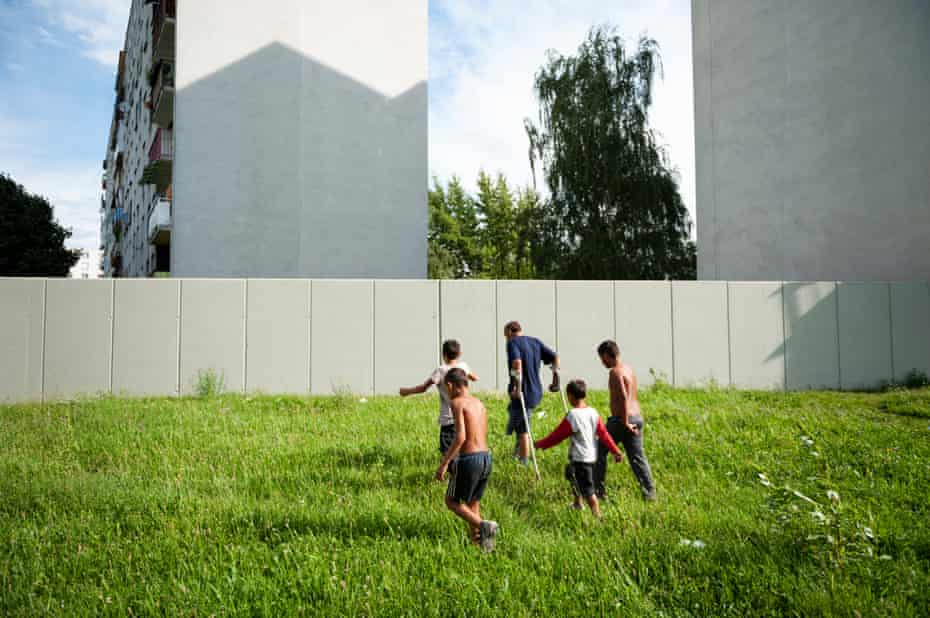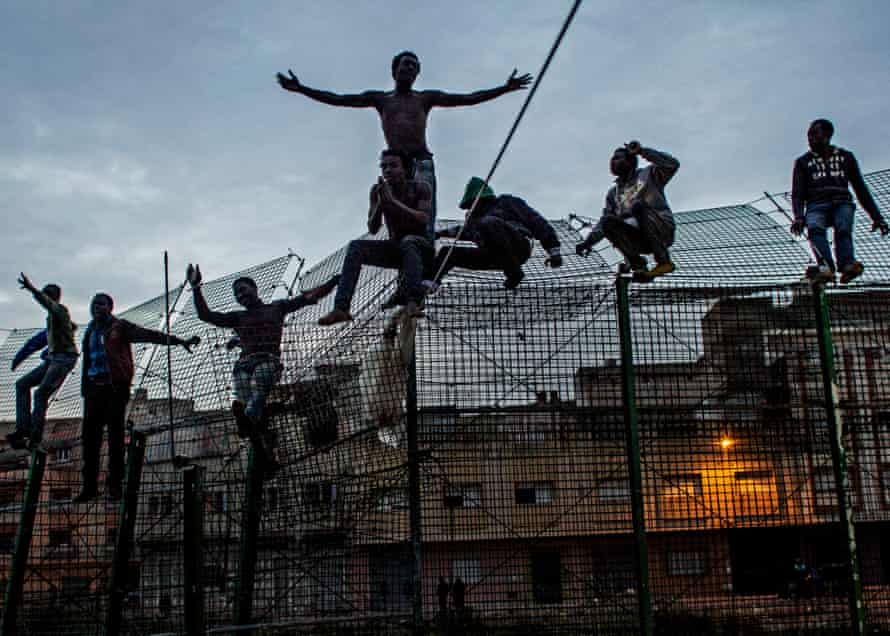
The southern border wall, as it is euphemistically known, between the United States and Mexico has come to represent much more than a line on a map. Since the 2016 US presidential campaign, it has assumed the status of an all-consuming ideological crusade for Donald Trump. Propelled into power on spittle-flecked chants of “Build the wall!”, Trump exploited the potency of a simplistic slogan calculated to incite fear and loathing. Migrants fleeing violence or seeking a better life in the US were reframed through Trump’s racist prism as an unstoppable torrent of dark-skinned psychopaths and spongers. Only a wall – Trump’s wall – could save America.
Words have consequences. And so do walls. The latest atrocity in El Paso, when an avowed white supremacist drove for 10 hours to a supermarket used by Latino families in order to murder and maim, was explicitly motivated by Trump’s baleful, anti-immigrant rhetoric. He was also a big fan of Trump’s wall, which Trump himself has rhapsodically described as ‘‘an impenetrable, physical, tall, powerful, beautiful southern border wall”.
Yet despite its Ozymandian ambition, the “beautiful wall” has stuttered and stumbled, still more frenzied rallying cry than bricks and mortar reality. Geography and logistics quietly conspire against it – America’s border with Mexico is nearly 2,000 miles long, for a start. Incendiary talk of spiralling migrant numbers is also misleading. The number of people detained on the border has fallen from 82,000 per month under George W Bush’s administration to around 40,000 under Trump. This figure is rising, but even when migrant numbers were at historic lows, Trump persisted with his inflammatory hyperbole, characterising the situation on the border as a national security crisis.
With exquisite irony, Americans describe gated communities as ‘forting up’
In a country founded on the premise of immigration, such mendacious pearl-clutching is deeply discomfiting. Yet for successive US governments, building border barriers has long been seen as an easy way of making presidential incumbents appear tough and vote-winning. Trump’s virulent wall mania is simply the exceptionally thin end of a historic political wedge.
At the end of July, the US Supreme Court narrowly ruled by five votes to four that funding of $2.5bn could be released to build sections of Trump’s wall in California, Arizona and New Mexico. However, this falls far short of the estimated $25bn required to build a barrier along the entire length of the border. The wall’s final physical form also remains as yet undetermined. Invitations to tender design proposals resulted in a shortlist of eight 30ft-high steel and concrete prototypes, which underwent “breachability” tests by the US Customs and Border Protection agency (CBP). None met the CBP’s operational requirements, though they did provide “valuable data” that could be used in future barrier designs. So far, Trump’s wall remains an expensive mirage.

The response of architects to this unedifying sequence of events has veered wildly between supine complicity and impotent outrage. When the initial request for design proposals was issued, dozens of prominent American architecture and engineering firms threw their hats in the ring, eager for a tilt at the multibillion-dollar project. If nothing else, it showed that concerns raised on Trump’s accession about professional collusion with the administration’s partisan agenda were prescient and well-founded.
For American architects, the invitation to participate in designing a border wall struck a particularly raw nerve. Historically, the profession has proved willing to comply with political schemes that discriminated against marginalised communities and concretised systemic inequalities. During the second world war, American architects were engaged in the design of Japanese internment camps. In the federal highway projects that followed, architects and engineers created new infrastructure that invidiously targeted minority communities for “slum” clearance. And as cities were reshaped, many mass housing schemes served to profit developers by breaking anti-discrimination laws, yet architects often chose to disregard their wider social responsibilities. Now comes Trump’s wall.
American architects’ readiness to cosy up to El Presidente is emblematic of a profession that has become passive about its ethical mission, disempowered to the point where it can no longer assert moral agency. There has been a backlash, of sorts, but it lacks an effective, activist focus. Instead, it is diffused into an assortment of “more unites us than divides us” clickbait, featuring whimsical speculations such as a 2,000-mile-long dining table, a flat-pack Ikea “Börder Wåll” kit, a crowdfunding campaign to construct a golden picket fence around Trump’s Palm Beach compound and a trio of pink seesaws installed between the steel slats of the existing border barrier. Though these stunts get energetic traction on social media, they have no chance of derailing Trump’s loathsome infrastructure juggernaut.

Trump would not be the first or last potentate to obsessively fixate on a wall. History is full of walls and wall builders. Picked over by archaeologists, their crumbling carcasses are doleful monuments to antique hubris. But the wall is always with us, reinventing itself for the modern era, parcelling up the globe into neat nation states and enclaves. Lines on a map effectively turn land into territory and people into citizens. Cartography is a political tool. Walls are merely the most visible manifestation of a larger apparatus of militarised surveillance and technology employed to defend territory and keep people in their place.
Some sense of this brute physicality and absurdity is conveyed in the group exhibition Walls of Power, part of the 2019 Arles photography festival. In theory, the fall of the Berlin Wall, pixellated into a million souvenir chunks, heralded a new era of global openness, transparency and mobility. In practice, it was marked by a furore of barrier-building. Of the 66 physical barriers currently in existence between nation states, 50 were built after 2000. More recently, Europe has rushed to consolidate its border infrastructure in response to the flow of refugees and migrants from Syria and Africa. Images of young men clinging to border fences in the Spanish enclave of Melilla in Morocco show human desperation – and defiance – at its most extreme.

In 2015, Hungary erected a 110-mile border fence topped with concertina wire along its southern border. Despite criticism from the EU for breaching its legal obligations to process and resettle people, the Hungarian government refused to cooperate or demolish the fence, sending the EU a bill for €400m, which it claimed was half the construction cost. The EU declined to pay. Hungary’s right-wing premier, Viktor Orbán, has also claimed “ethnic homogeneity” is vital for his country’s economic prosperity. Like Trump’s wall, Orbán’s fence shores up a manifestly toxic and reactionary vision of national identity.
Closer to home, Britain helped to fund the “Great Wall of Calais”, a border barrier designed to deter migrants from hitching rides across the Channel on trains and lorries. And in Belfast, the so-called “peace walls”, put in place during the Troubles to separate nationalist and unionist communities, still endure, casually cutting through roads, housing estates and back yards. At the last count, Belfast had 97 individual barriers, many of which are now tourist attractions, absorbed into city’s fabric in the same way as the Berlin Wall or Nicosia’s Green Line became an unremarked part of daily life.
Beyond the geopolitics of borders are the more prosaic manifestations of walled neighbourhoods and gated communities, which categorise people by more intricate denominators of status, class, race, faith and age. With exquisite irony, Americans describe it as “forting up”. From the domestic compound to Trump’s wall, the dread of the world outside our gates casts an increasingly long shadow.

